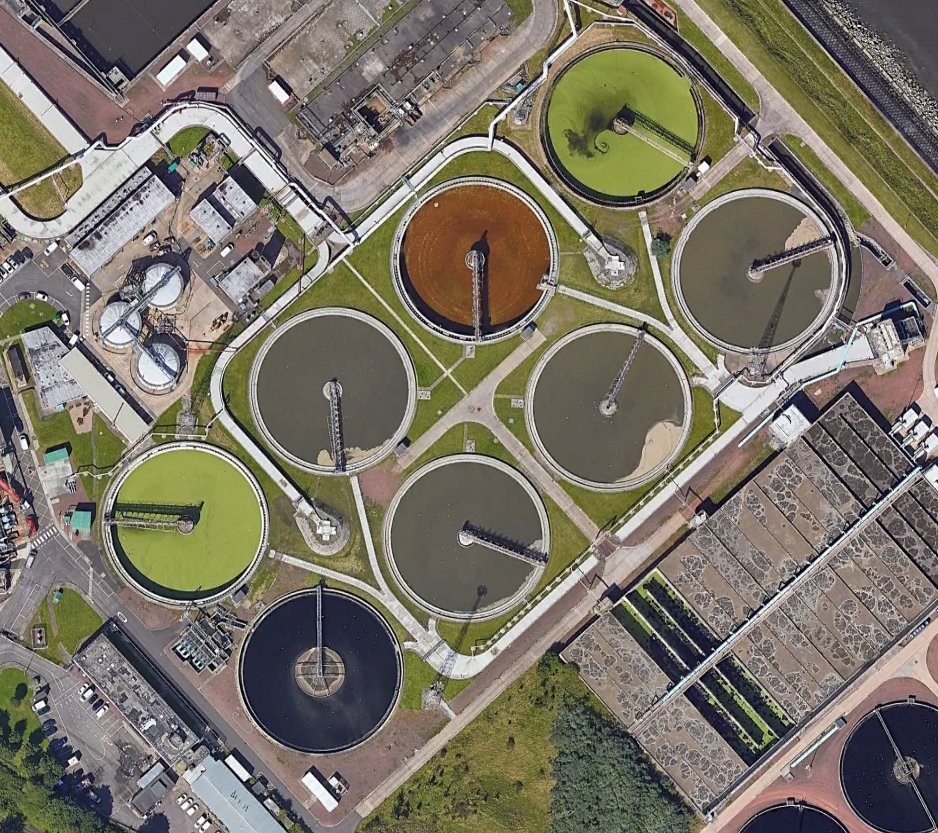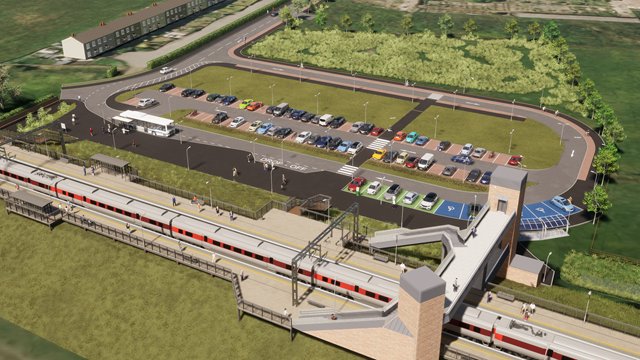
What better way to round off a Sunday evening than talking once again about sewage. Specifically, part 3 of the Edinburgh sewer story - the great untold engineering feat of the 1970s Interceptor Sewer Scheme.
To recap, in the 1950s, Edinburgh's sewage scheme was to collect all the effluent and then pipe out to sea and hope for the best. After the big Victorian schemes to intercept the waste going into the Water of Leith, the system had progressed along these lines as the city grew
The system basically prevented raw sewage entering the major rivers and burns and conducted the waste, sewage and runoff from the natural drainage catchments of the city towards the Forth. 

In 1951, the Rivers (Prevention of Pollution) (Scotland) Act made provision for the establishment of river purification boards to begin to tackle the issue of discharge of raw waste into tidal waters. This saw the Lothians River Purification Board created (pic NRJ). 

The Lothians Board had the power to make the Forth subject to a "Tidal Waters Order": in 1960 such an order was made. A follow on act gave the Board the power to make the City Corporation, as it was, take action by licensing the discharge subject to conditions.
The clock was ticking now for the City to take action, and initial planning of what should be done started in 1966 and was agreed with the Purification Board in 1967, to be completed by 1976
The fundamental challenge was Edinburgh's hilly topography that divided the city up into water catchments - it caused the sewage network to develop piecemeal following the natural drainage. As such the system was in no way integrated and had 9 separate discharges into the Forth.
So the new system had to "intercept" and collect all the waste from the 9 different outlets. It then had to consolidate it somewhere. The natural "centre of gravity" of drainage is in Leith Docks. It also had to run East-West along negligible gradients yet still be gravity worked
It then had to treat the waste, and discharge the primary treated effluent somewhere beyond the gently shelfing seabed, where the weak tidal flow made natural dispersion tricky. And it had to do something about the sludge from primary treatment. So there was a huge amount to do.
The fundamentals of the scheme were to create a new primary treatment works somewhere near Leith Docks - this would require land reclamation - and to construct two vast new interceptor sewers that lead to it from east and west, tapping off the existing discharge outlets
The treatment works would dispose of the treated effluent through a single extensive outfall far out into the Forth, and it would capture the primary sludge and dispose of this far off in the outer Forth by means of a disposal tanker.
In essence, the new works would be on reclaimed land east of Leith Docks at Seafield. Two new inteceptor sewers would run to it from east and west, and a 2km outfall would be constructed under the Forth. I have marked these as green on top of the pre-existing sewers (Pic © ICE) 



A big challenge for the new sewers was the sheer range of geological conditions to be dug through; coals, sandstones, mudtones, clays, shales, geological folding, faulting and jointing, the Pentland Fault and all sorts of impressively named features like the "Midlothian Syncline"
The new sewers were 15.3km long and fairly large. And got larger as they went. The western sewer started at 1.4m diameter and grew to 3.1m. The eastern sewer started at 0.7m and grew to 2.3m. They intercepted the old network at 26 separate points.
6 pumping stations were required to lift the waste uphill via rising mains from parts of the coast that would not naturally drain themselves.
Most of the route ran under built up areas and therefore 73%, or 11.6km, of the route would have to be tunnelled. The geology required the use of explosives, limited by the presence of the buildings overhead.
Much of the excavation was done by compressed air at high pressure, this pressure helped hold back the ground water given how shallow the tunnelling was through fairly wet ground. In some places the ground had to be artificially drained in advance.
And in places where there was no other option due to the ground being saturated fine silt and sand, liquid nitrogen was injected into the ground to freeze it, making it stable enough to dig through.
The western sewer also had to cross the Water of Leith at some point. The location was in St. Mark's Park (green line, but it's an approximate route). This required an inverted syphon on the river bed, which was constructed by building a cofferdam and diverting the river around. 

The new treatment works was reclaimed out of the East Sands of Leith by extending the existing sea wall of the dock railway yards and then filling in behind it. 





The sewers and works were calculated to treat the waste of a population within its drainage catchment of 470,000 and 250,000 cubic meters of flow a day. It allowed for an increase to 600,000 people and 336,000 cubic meters a day.
There are a couple of great pictures here by @talloplanic of Seafield Works in the later phase of construction flickr.com/photos/beqi/15…
And here. Notice the 3 concrete sewage inlets rising out of the ground into the screens below the big white shed building on the other side of the road from the works. flickr.com/photos/beqi/15…
The screens separated insoluble solids out of the sewage. These were collected in skips and taken to the City incinerator at Powderhall for disposal. Grit was also removed, washed and disposed of. Storm tanks collected excess inflow.
After screening, the waste was pumped into one of the 8 sedimentation tanks where the solid settled out into a sludge. The sludge was collected in tanks and the effluent was drained off for disposal at the outfall. 

The concentrated sludge was then pumped to two storage tanks at Leith Docks and then into the MV Gardyloo, a purpose-built tanker vessel that would carry it out to the outer Forth and then dump it overboard. 

The sludge tanks at both Seafield and Leith Docks were fitted with a deodorising system, whereby Ozone was generated in a high voltage discharge, dissolved in water and then sprayed over the stench. I can't comment if that worked.
This just left the liquid effluent to get rid of. This was (is) by means of a gigantic outfall shaft, 7m diameter sunk 52 meters into the ground before turning through 90 degrees, reducing in diameter to 3.7m and heading out to sea for 2.8km. Pic © ICE 

After 2km, the outlet began to branch upwards - 20 vertical 0.9m diameter pipes, one every 50m or so, rising to the sea bed from the main tunnel to diffuse the waste out into the sea via 4-headed ports. The tunnel diameter decreased proportionately along this section.
During construction, the outfall tunnel had a double track narrow-gauge, battery-powered railway in it to bring the excavated spoil back to the main shaft for disposal. The tunnel was made wider at this point to accommodate a siding of the railway for spoil wagons.
The outfall tunnel was constructed to standard colliery standards and practices, which makes perfect sense. The miners and engineers of the Lothians coalfield had been digging roadways under the Forth in this manner for a hundred years.
The diffuser outlets were drilled down into the outlet from above by the jack-up rig "GEM 126" moored in the Forth.
Work on the whole scheme proceeded remarkably quickly and efficiently, slowed down mainly by restrictions on spending. The scheme was transferred from the City of Edinburgh Corporation to Lothian Regional Council during local government reorganisations in 1975 

The initially completed part of the scheme started operation in the autumn of 1976, with most of the parts of the wider scheme in place by 1976. The estimated cost in 1975 was £26.04 million, or about £224 million in today money.
The construction was relatively incident free, however I have read that a mistake during blasting in one section of the sewer caused two houses above to become so damaged they had to be demolished. But I haven't yet found out where they may have been.
Here is a lovely picture of the pipes through which the solids screened out of your sewage are collected into skips for disposal flickr.com/photos/the-doc…
And this atmosphericly grim 1981 shot shows the newly constructed treatment works (the building is the testing laboratory block) with its proud civic sign and a BR train heading to the docks with coal for export flickr.com/photos/martynh…
And lastly, a note on the success of the scheme. Limits on the "amenity" beaches were set at 2,400 E. coli per 100ml water. The raw sewage was 20,000,000/100ml. The works reduced the level at the beaches to 1,000/100ml in the *worst* flow conditions
Here is this whole, shitty🧵as a single, easy-to-digest webpage. threadreaderapp.com/thread/1452375…
• • •
Missing some Tweet in this thread? You can try to
force a refresh























